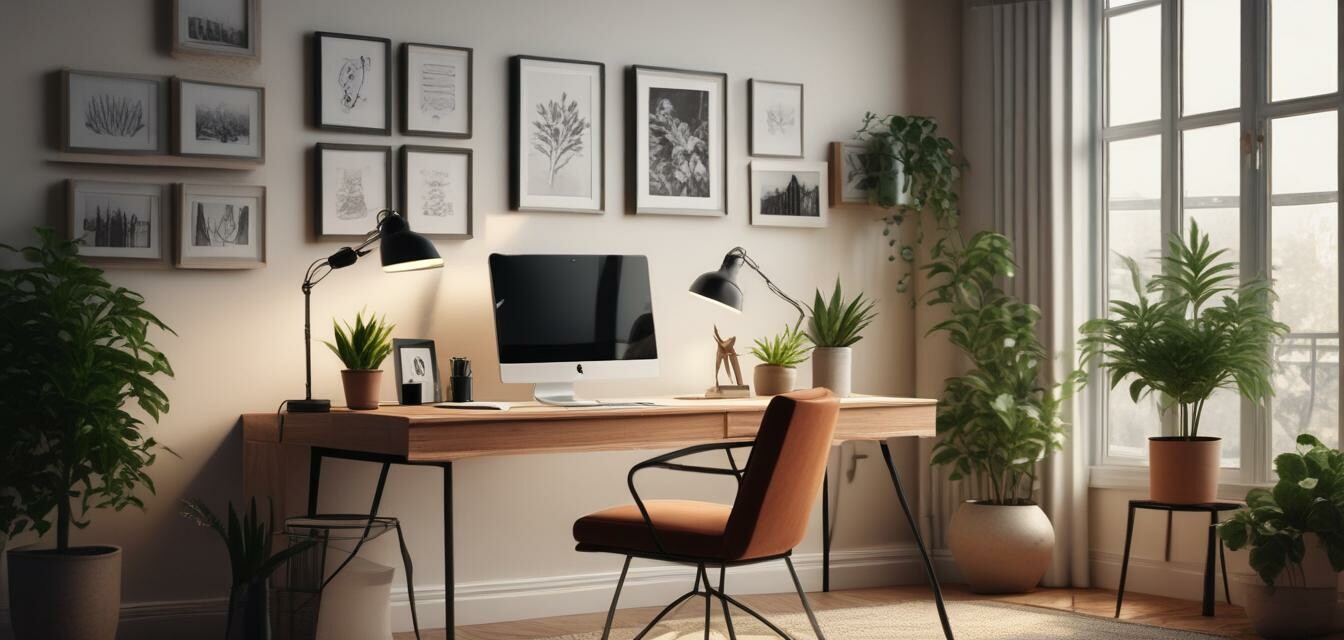
Achieving Work-Life Balance in Your Home Office
Key Takeaways
- Design your workspace to separate work from personal life.
- Incorporate ergonomics to enhance comfort during work hours.
- Add personal touches to boost creativity and motivation.
- Establish clear boundaries and schedules for work and leisure.
- Utilize storage solutions to minimize clutter and distractions.
Creating a home office is more than just setting up a desk and chair. It's about crafting an environment that enables productivity while promoting a healthy work-life balance. With the shift towards remote work, understanding how to utilize your home office effectively is essential. In this article, we'll explore various tips and strategies to help you design a workspace that meets your professional needs while also allowing you to maintain a harmonious connection between work and home life.
Why Work-Life Balance Matters
Achieving a balance between work and personal life is vital for overall well-being. It helps reduce stress, promotes mental health, and improves productivity. Here are a few reasons why a balanced approach is crucial:
- Prevents burnout by ensuring adequate rest and personal time.
- Enhances relationships with family and friends.
- Boosts creativity and motivation when work and rest are harmoniously integrated.
Designing Your Home Office for Balance
Below are some practical tips on how to create a home office that fosters work-life balance:
1. Define Your Workspace
Establish a specific area in your home dedicated to work. This separation can significantly impact your productivity and mental state. Here are some layout options:
| Workspace Type | Description |
|---|---|
| Dedicated Room | A separate room to isolate work from home life. |
| Corner of a Room | A small nook that minimizes distractions while still feeling cozy. |
| Shared Space | A flexible area, such as a dining table, used for both meals and work. |
2. Ergonomics Are Key
Comfort is paramount when you're working from home. Invest in ergonomic furniture that encourages good posture and reduces physical strain. Here are some essential ergonomic considerations:
- Height-adjustable desk to alternate between sitting and standing.
- Supportive chair that promotes spinal alignment.
- Proper monitor height to avoid neck strain.
3. Personalize Your Space
Adding personal touches to your home office can enhance your mood and motivation. Consider incorporating:
- Artwork or photographs that inspire you.
- Plants to improve air quality and bring life to your space.
- Color schemes that reflect your personality while remaining calming.
4. Set Boundaries
Establish clear boundaries for your work schedule versus personal time. Here’s how:
- Set specific work hours and communicate them to family members.
- Turn off work emails after hours to disconnect.
- Create a closing ritual to signal the end of the workday.
5. Declutter and Organize
A tidy workspace leads to a clear mind. Invest in storage solutions to keep your office organized:
| Storage Solution | Benefits |
|---|---|
| Bookshelves | Store books and decorative items without cluttering your desk. |
| Filing Cabinets | Keep documents organized and out of sight. |
| Drawer Organizers | Maintain an orderly workspace by sorting supplies. |
Incorporating Technology Wisely
Technology can enhance your work-from-home experience when used judiciously. Look into:
- Apps that help manage your time effectively.
- Smart lighting solutions that adjust to your working hours.
- Technology to minimize distractions, such as website blockers.
For more tips on lighting solutions, check our Lighting Solutions category.
Finding Inspiration
Your home office should not only be functional but also a source of inspiration. Explore different design styles:
- Minimalist: Focus on simplicity and functionality.
- Industrial: Embrace raw materials and vintage elements.
- Cozy: Create a warm atmosphere with textiles and personal artifacts.
For additional inspiration, visit our Tips and Inspiration category.
Pros
- Increased comfort leads to better productivity.
- A well-designed space can reduce stress levels.
- Promotes creativity with personal touches.
- Defines boundaries to prevent work-life overlap.
Cons
- Initial investment in furniture may be high.
- May require a certain amount of trial and error.
- Distractions can still arise at home.
Conclusion
Creating a home office that promotes work-life balance is an ongoing process. By employing these strategies and techniques, you can cultivate a workspace that not only caters to your professional needs but also nurtures your personal well-being. Whether it’s defining your workspace, ensuring ergonomic comfort, or establishing clear boundaries, every step counts in achieving that crucial balance of work and life. Start transforming your home office today!